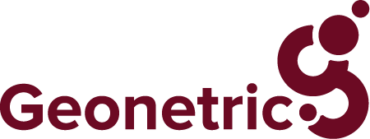The healthcare world is quickly realizing just how important digital marketing can be. It’s a powerful way to connect with patients and meet business goals. But to really make the most of digital marketing, it’s essential for healthcare organizations to get a good grip on what digital healthcare analytics is all about.
Digital marketing is a lot like a toolbox. Inside, you’ve got various tools (like websites, social media, and online ads) that help you reach out to patients. But to use these tools effectively, you need to know what’s working and what’s not. That’s where healthcare marketing analytics comes in.
Digital Analytics: At a Glance
Digital analytics involves examining data from online sources like websites, mobile apps, and social media. This process gives a clearer understanding of user behaviors and preferences in the digital space. By analyzing this data, we can learn what users are searching for and how they’re interacting with digital platforms. This knowledge is crucial for improving customer experiences and refining our marketing strategies.
This data is collected from various channels, providing a comprehensive view of the customer’s online journey. By analyzing different sources, we gain insights into the most effective paths that lead to a customer deciding to engage with our services or products.
Digital analytics, which includes analyzing website data, is a subset of behavioral analytics. Behavioral analytics focuses on all forms of customer interactions with a business, not just digital. It’s about understanding and responding to customer behaviors and needs, enhancing our ability to serve them effectively.
What Are Digital Healthcare Analytics?
By extension, digital healthcare analytics involves gathering, studying, and making sense of data from various digital sources that provide information about how patients and healthcare providers interact with digital marketing channels. The main aim here is to delve into the behaviors, preferences, and needs of patients and providers. This deep dive helps us understand what they’re looking for and how they respond to different digital platforms.
By analyzing this data, we can pinpoint what’s working well and what’s not in our digital marketing strategies. For example, we might discover that patients are more engaged with certain types of email content or that providers prefer specific features. This insight is invaluable. It allows us to tailor our digital marketing efforts more precisely, ensuring they are more effective and resonate better with our audience.
The ultimate goal of digital healthcare analytics is to enhance patient engagement and meet our business objectives more efficiently. Through understanding and responding to the digital footprints of patients and providers, we can create more personalized, relevant, and effective digital marketing campaigns. This not only helps in building stronger relationships with our audience but also drives better outcomes for our healthcare marketing efforts.
Why is Data Mining Important for Healthcare Marketing Analytics?
Imagine your healthcare organization is launching a social media campaign to introduce a new service. If they don’t use digital healthcare analytics, they won’t know if their campaign is hitting the mark. But with analytics, they can track how many people like, comment, share, and click on their posts. This data is key to understanding how well the campaign is doing and helps in making informed decisions for future marketing efforts.
Digital analytics plays a crucial role in fine-tuning these campaigns. It helps in delivering content that’s relevant to the audience and drives them to take action, like signing up for a service. Analytics provides a comprehensive view of the campaign’s performance, ensuring that patient experiences are engaging and memorable.
Additionally, digital analytics is invaluable in managing the financial aspect of digital advertising. It tracks metrics like cost-per-click (CPC) or cost-per-thousand impressions (CPM). These figures are essential for understanding the return on investment (ROI) for ad spending. Knowing this helps shape a more effective and efficient digital marketing strategy, making every dollar count in reaching and engaging the target audience.
How Do Digital Analytics Work in Healthcare Marketing?
In digital healthcare marketing, the success of campaigns is gauged using various metrics and Key Performance Indicators (KPIs). Let’s look at some of the most commonly used ones:
- Bounce Rate: The percentage of visitors who leave a website after viewing only one page.
- Click-Through Rate (CTR): The percentage of people who click on a link or call-to-action (CTA) in an email or digital ad.
- Conversion Rate: The percentage of visitors who take a desired action, such as filling out a form or making an appointment.
- Cost Per Acquisition (CPA): The cost of acquiring a new patient or customer through digital marketing channels.
- Return on Investment (ROI): The revenue generated by digital marketing campaigns relative to their cost of implementation.
- Return on Ad Spend (ROAS): The revenue generated for each dollar you spend on an advertising campaign.
- Website Traffic: The number of visitors to a website.
Choosing the right metrics and KPIs depends on what your healthcare organization aims to achieve. For instance, if your goal is to boost patient engagement with a specific service, focusing on conversion rate and CTR might be most useful. However, if reaching a broader audience is the target, then website traffic and social media engagement are key metrics to monitor.
Best practices in tracking these metrics include using tools like Google Analytics, setting up goals and events to monitor conversions, regularly reviewing data, and basing decisions on the insights gathered. This approach ensures that healthcare digital marketing efforts are not only effective but also aligned with the organization’s engagement goals.
Types of Digital Healthcare Marketing Analytics
In digital healthcare marketing, we often talk about three types of analytics: descriptive, predictive, and prescriptive. Each of these plays a unique role in shaping effective digital marketing strategies.
Descriptive Analytics is all about looking back at what has already happened. This includes checking out website traffic, how people interact on social media, and the rates at which emails are opened. By examining past performances, healthcare organizations can figure out which digital channels and campaigns have been most successful in engaging patients and healthcare providers.
Predictive Analytics takes things a step further by using statistical models and machine learning to guess what might happen in the future. In healthcare digital marketing, this could mean scoring potential leads, segmenting customers, or modeling behavior patterns to predict how likely patients and providers are to interact with certain digital channels and campaigns. It’s a great tool for identifying who is most likely to respond to your marketing efforts.
Prescriptive Analytics goes even beyond descriptive and predictive analytics. It doesn’t just analyze data or make predictions; it actually suggests specific actions to enhance patient and provider engagement. Using a mix of data analysis and decision-making algorithms, it guides organizations on the best steps to take to meet their goals. In healthcare digital marketing, this might involve using marketing automation, personalizing content dynamically, or making real-time bidding decisions.
Together, these three types of analytics provide a comprehensive approach to understanding and optimizing digital marketing in the healthcare sector, ensuring that efforts are not just effective, but also highly targeted and efficient.
Healthcare Marketing Analytics VS HIPAA-Compliance
Recent updates to HIPAA guidelines, and on-going changes to state-level privacy regulations, have presented a formidable challenge for healthcare marketers, especially in the realm of web performance tracking. These changes have tightened the regulations around the use of Personal Health Information (PHI), posing significant hurdles for marketing professionals accustomed to leveraging detailed patient data for targeted campaigns and analytics.
This regulatory shift has not only constrained the traditional methods of digital marketing but also necessitated a fundamental rethink in strategies that hinge on the accessibility and utilization of PHI. The impact is far-reaching, affecting everything from ad retargeting to personalized content, and forcing marketers to navigate a complex landscape where compliance is critical and the margin for error is increasingly narrow.
In a recent post, Ben Dillion took a deep dive into these challenges, highlighting the need to harness the power of digital analytics tools without compromising the sanctity of patient data. Additionally, organizations need to leap over these compliance hurdles without further impacts to their performance metrics and patient experiences.
Tips for Implementing Privacy-Conscious Digital Healthcare Marketing Analytics
Start with a thorough understanding of the latest HIPAA regulations and how they impact digital marketing. This foundational knowledge is crucial for ensuring compliance in all marketing activities.
- Prioritize Data Privacy and Security: Implement robust data protection measures. This includes secure data storage, handling, and transmission, especially when dealing with PHI.
- Practice Good Data Governance: Ensure analytics are not overly applied to areas where it’s not needed and that the proper amount of oversight is utilized during implementation. If the need for analytics changes, minimize risk by removing analytics tracking.
- Leverage De-identified Data: Use de-identified or aggregated data in your analytics to gain insights while respecting patient privacy and complying with regulations.
- Invest in Secure and Compliant Technologies: Choose CRM systems and analytics tools that are designed for the healthcare industry, ensuring they meet all necessary compliance standards.
- Develop a Strong Content Marketing Strategy: Create valuable, educational content that addresses general health concerns, which can help in SEO and patient engagement without the need for PHI.
- Optimize Social Media Engagement: Use social media platforms responsibly to provide general health information, avoiding the sharing of PHI.
- Employ Predictive Analytics: Integrate predictive analytics to forecast trends and patient behaviors, guiding marketing strategies without relying on sensitive data.
- Conduct Regular Team Training: Ensure that your marketing team is continuously trained in the latest HIPAA regulations, data handling practices, and digital marketing techniques.
- Utilize Key Performance Indicators (KPIs): Measure the success of your marketing strategies with KPIs and use these insights to refine and improve your approaches.
- Collaborate with Legal and Compliance Experts: Work closely with legal and compliance professionals to ensure that all marketing efforts are in line with regulatory requirements.
- Stay Abreast of Emerging Technologies: Keep an eye on new technologies like artificial intelligence (AI) and machine learning that can revolutionize healthcare marketing while maintaining privacy standards.
- Incorporate Telehealth and Digital Health Trends: Integrate the growing trends of telehealth and digital health into your marketing strategies to connect with a tech-savvy patient base.
- Focus on Multichannel Marketing: Diversify your marketing efforts across multiple channels (email, social media, web, etc.) to reach a broader audience while tailoring messages to each platform’s norms and audience preferences.
By following these comprehensive steps, healthcare marketers can successfully create effective, privacy-conscious marketing plans that leverage digital analytics to their fullest potential, ensuring both regulatory adherence and marketing efficacy.
Who Can Help a Healthcare Organization Implement Privacy-Conscious Digital Marketing Analytics?
Implementing a digital analytics strategy for healthcare marketing can be approached in different ways, each with its own set of advantages and considerations. The choice between an in-house solution or leveraging a vendor agency depends on various factors such as the organization’s resources, expertise, and specific needs.
In-House Solution
- Expertise: An in-house team is made up of employees who are intimately familiar with the organization’s goals, culture, and specific healthcare context. They can tailor analytics strategies closely aligned with the organization’s unique needs.
- Control and Integration: Having an in-house team allows for greater control over the analytics process and ensures that the digital marketing strategy is seamlessly integrated with other organizational strategies.
- Cost: While in-house teams provide better control and alignment, they can be more expensive in the long term due to salaries, training, and technology investments.
- Time and Resource Investment: Developing an in-house team requires significant time and resource investment, particularly if the organization needs to train staff or hire new talent.
Agency-Led Solution
- Specialized Services: Agencies often bring specialized knowledge and tools tailored to healthcare digital marketing. They can offer innovative solutions and insights that an in-house team might not be aware of.
- Broader Perspective: Agencies work with a variety of clients, which can provide a broader perspective and innovative strategies that have been successful in other contexts.
- Coordination Efforts: Working with an agency requires coordination and clear communication to ensure that their strategies align with the organization’s objectives.
- Cost-Efficiency: It can be more cost-effective in the short term, as it eliminates the need for extensive training or hiring.
- Data Privacy and Security: It’s vital to ensure that any agency understands and complies with healthcare regulations, especially concerning patient data privacy and security.
Ultimately, the choice between in-house or agency-led digital analytics for healthcare marketing depends on the organization’s specific context, resources, and priorities.
Need Help?
Healthcare organizations continually grapple with how to effectively track and analyze their digital performance without stepping over the critical boundaries set by privacy regulations like HIPAA.
This is where a hybrid approach to digital analytics for healthcare really shines.
Geonetric, a digital healthcare marketing solution, has over two decades of experience helping healthcare organizations like yours innovate and evolve. With Geonetric at your side, your organization will have access to HIPAA compliance-friendly performance tools like Geonetric Privacy Filter, which can unlock the full potential of your digital marketing efforts while firmly adhering to privacy guidelines.
If you want to learn more about how Geonetric Privacy Filter can help you supercharge your digital marketing efforts, contact us to learn how we can help to align metrics with your goals.










